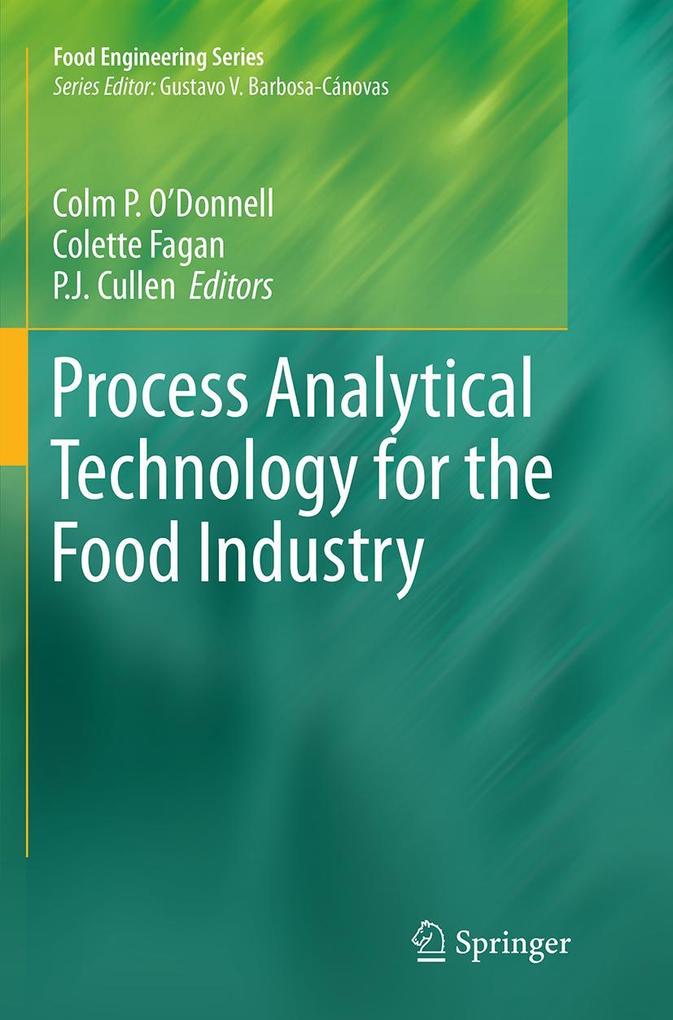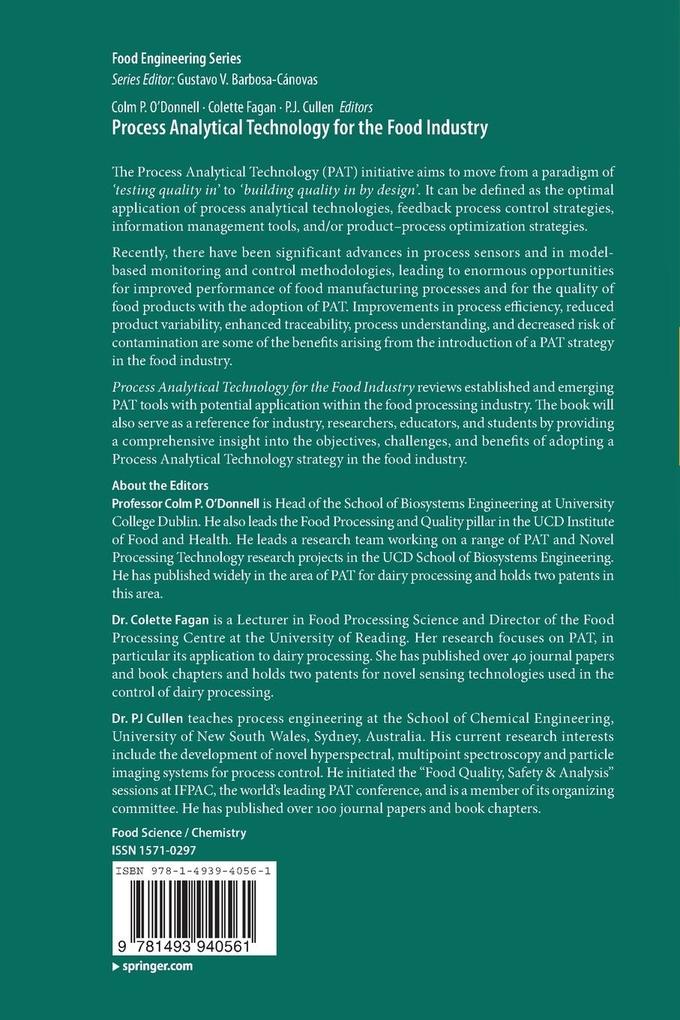
Zustellung: Fr, 16.05. - Mo, 19.05.
Versand in 2 Tagen
VersandkostenfreiBestellen & in Filiale abholen:
The Process Analytical Technology (PAT) initiative aims to move from a paradigm of 'testing quality in' to 'building quality in by design'. It can be defined as the optimal application of process analytical technologies, feedback process control strategies, information management tools, and/or product-process optimization strategies.
Recently, there have been significant advances in process sensors and in model-based monitoring and control methodologies, leading to enormous opportunities for improved performance of food manufacturing processes and for the quality of food products with the adoption of PAT. Improvements in process efficiency, reduced product variability, enhanced traceability, process understanding, and decreased risk of contamination are some of the benefits arising from the introduction of a PAT strategy in the food industry.
Process Analytical Technology for the Food Industry reviews established and emerging PAT tools with potential application within the food processing industry. The book will also serve as a reference for industry, researchers, educators, and students by providing a comprehensive insight into the objectives, challenges, and benefits of adopting a Process Analytical Technology strategy in the food industry.
Inhaltsverzeichnis
Benefits and challenges of adopting PAT for the food industry. - Multivariate Data Analysis (Chemometrics). - Management Systems. - Infrared spectroscopy. - Raman Spectroscopy. - Magnetic Resonance Imaging and Nuclear Magnetic Resonance Spectroscopy. - Computer vision. - Thermal imaging. - Hyperspectral Imaging. - Diagnostic ultrasound. - Emerging PAT technologies. - Food industry perspectives on the implementation of a PAT strategy.
Produktdetails
Erscheinungsdatum
10. September 2016
Sprache
englisch
Auflage
Softcover reprint of the original 1st edition 2014
Seitenanzahl
312
Reihe
Food Engineering Series
Herausgegeben von
P. J. Cullen, Colette Fagan, Colm P. O'Donnell
Verlag/Hersteller
Produktart
kartoniert
Abbildungen
VIII, 301 p. 107 illus., 45 illus. in color.
Gewicht
476 g
Größe (L/B/H)
235/155/17 mm
Sonstiges
Previously published in hardcover
ISBN
9781493940561
Entdecken Sie mehr
Bewertungen
0 Bewertungen
Es wurden noch keine Bewertungen abgegeben. Schreiben Sie die erste Bewertung zu "Process Analytical Technology for the Food Industry" und helfen Sie damit anderen bei der Kaufentscheidung.











